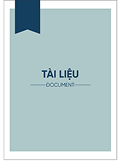Tài liệu
Corruption and SME financing structure: the case of Vietnamese manufacturing

Xem mô tả
155
Xem & Tải
3
Tóm tắt
Purpose – Corruption has been evidenced as one of the major factors that drive a firm’ s dynamics and growth. This study examines the relationship between corruption and financing structure decisions of small and medium-sized enterprises (SMEs) in Vietnam. Design/methodology/approach – The authors use a longitudinal data set from the Vietnam’ s SME Survey in the period 2007–2013 and adopt the two-stage least squares method to deal with endogeneity. Findings – After controlling for endogeneity and firm heterogeneity, the authors find that, overall, corruption does significantly affect the decisions of financing sources. Given that, corruption increases the use of informal debt and decreases the levels of formal debt, owner’ s equity and retained earnings. Practical implications – The findings suggest implications for corruption-combating actions and policies. Originality/value – Different from previous studies that either provide evidence of government corruption and a firm’ s capital structure at the country level or focus on corruption and debt only, we deliver a more comprehensive analysis on the nexus between corruption and various financing sources.
Mô tả
economic management and policy
Tác giả
Phan, Hong Mai
Lan Archer
Người hướng dẫn
Nơi xuất bản
Nhà xuất bản
Kinh Tế Quốc Dân
Năm xuất bản
2020
ISBN
1976-0020
ISSN
Từ khóa chủ đề
Informal payments , Financing channels , SMEs , Vietnam , 2SLS , Endogeneity
Trích dẫn
Bộ sưu tập
Tệp tin

10-1108_JED-12-2019-0074.pdf
D:\NEU_DSpace\tapchitienganh
Dung lượng: 154.13 KBĐịnh dạng: pdf
Lượt xem: 0 Lượt tải: 3
